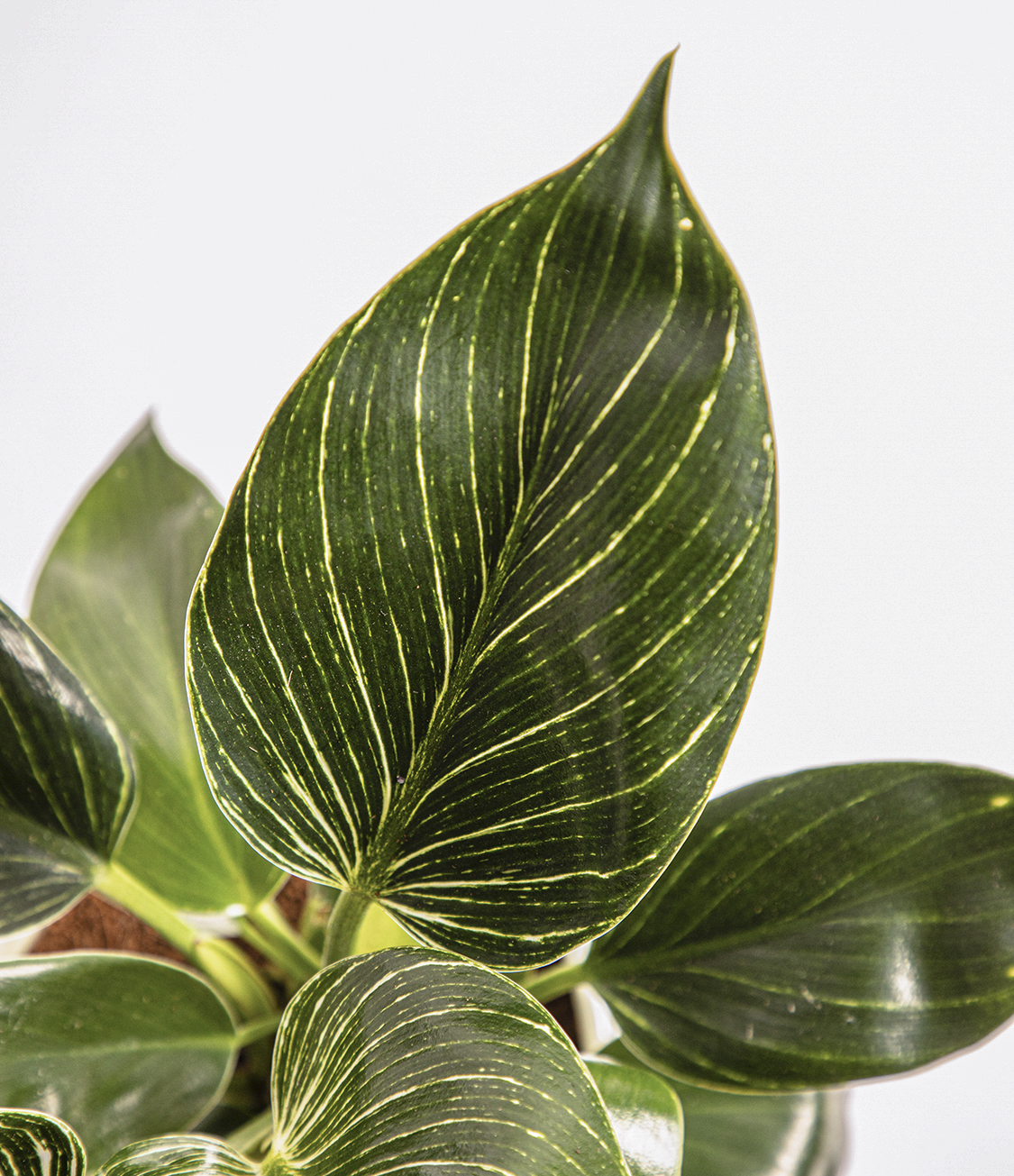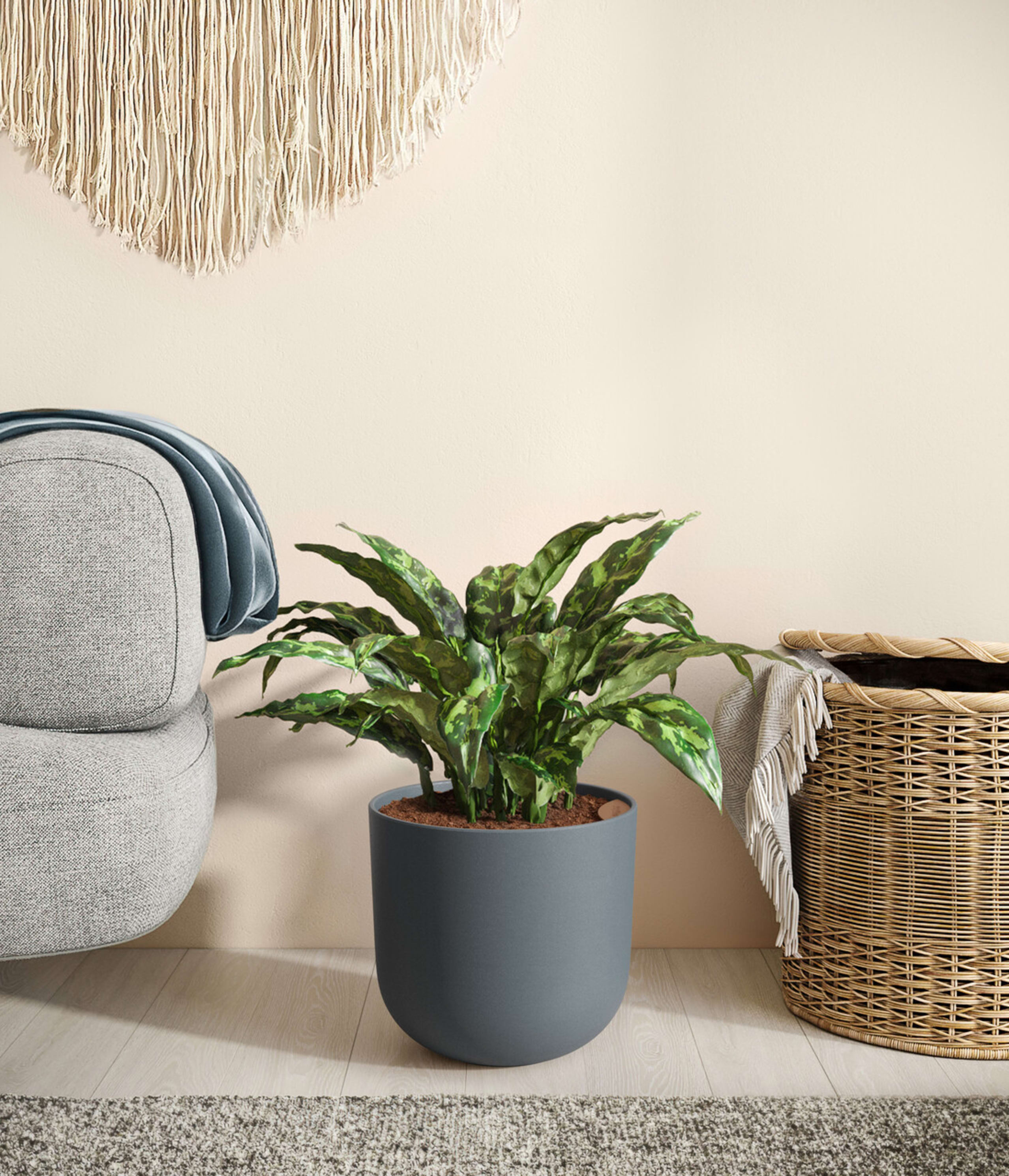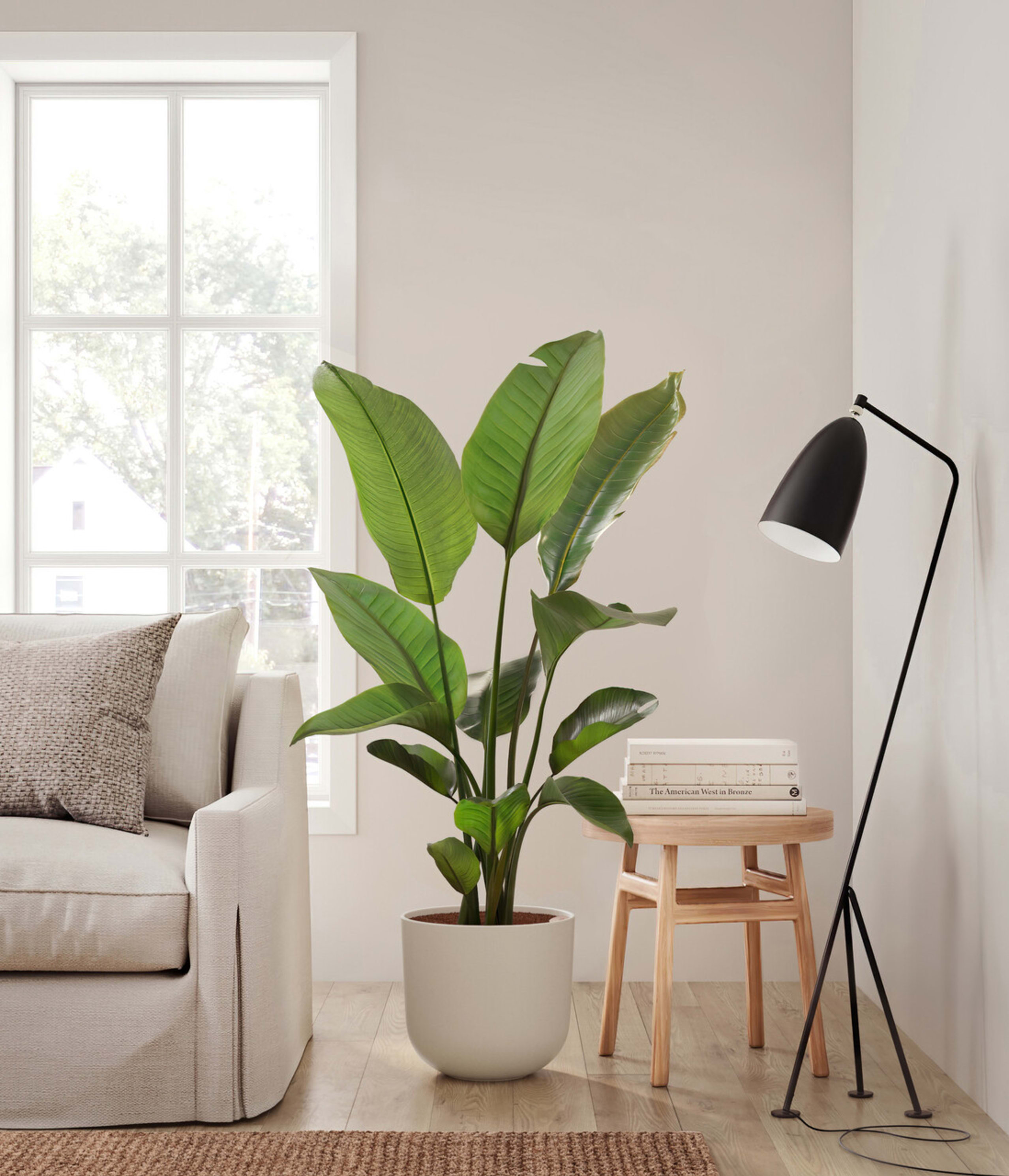Plant care library / Philodendron Birkin
How to Care for Philodendron Birkin
About Philodendron Birkin
Philodendron Birkin is easy to care for and easier to love - naturally getting its name from the Greek words Philo—'love' and dendron—'tree.' Philodendron Birkin is a miracle plant, born due to a rare mutation of its relative Rojo Congo. Joyful as it is resilient, it wears a variation of bright white stripes on its forest green pointed oval leaves.
Other common names
- White Wave
- Birkin White Wave
- White Measure
How Often Should I Water My Philodendron Birkin?
The Philodendron Birkin is resilient when it comes to drying out, but it's not recommended to let the plant stay that way for too long. With easyplant, watering your Philodendron Birkin is simple. Make sure to check the easyplant reservoir once a month and fill it when empty, and you're all set!
If you don't have an easyplant to make watering hassle-free, manually water your plant about once a week, depending on its location. Before you water, check the soil and make sure the soil is a bit dry to avoid overwatering, which can result in root rot. The Philodendron Birkin likes to be in moist soil during spring and summer. In winter, the soil should be mostly dry before watering. Ensure the plant's pot has proper drainage so it doesn't sit in excess water.
Philodendron Birkin Light Needs
Philodendron Birkin grows best in a space with bright indirect light, where the sun rays are diffused, and can also adapt to spaces with medium to low light. Avoid placing it in spaces without natural light or with direct sunlight.
Even though this plant can handle full direct light, it might wash out the color of the foliage. On the other hand, too little light can slow its growth. The ideal place for this plant to receive adequate light is by a west-facing window. A south-facing window with a sheer curtain to diffuse the light will work too.
Philodendron Birkin Plant Care
During your Philodendron Birkin's first few days at home, one or two leaves might yellow or fall. This is a normal part of the adjustment, which can take up to a couple of weeks, and there is no cause for concern. Once adjusted, Philodendron Birkin is very easy to care for and will reward your love for it by quickly bouncing back from any mishap. To help it grow optimally and evenly, occasionally dust the leaves and rotate the pot by a ¼ turn once a month.
How Big Do Philodendron Birkin Plants Grow?
Philodendron Birkin grows slowly and steadily until reaching about two feet in height and one to two feet wide. This plant grows up and out, covering a decent amount of surface area.
Philodendron Birkin is a slow-growing plant that doesn't require constant repotting. You will likely go several years before it needs to move to a bigger pot. The leaves of this plant grow from light to dark. They first appear white but turn green and grow darker as they mature. Over time you'll see changes in coloration, with thin white stripes appearing all over the leaves.
Unlike other Philodendron species, this plant is self-heading. It does not climb, so it doesn't need support, it holds itself up by its stems. Several factors affect this plant's growth, including proper lighting, regular watering, adequate temperature, and humidity, to name a few.
Temperature & Humidity
The ideal temperature for the Philodendron Birkin is between 60-75˚F (16-24˚C). Temperatures below 55˚F (13˚C) can cause damage to the leaves, so be sure your plant isn't near an A/C vent or any drafts. Though the Philodendron Birkin can adapt to temperatures about 75˚F (24˚C), keep an eye out for any signs of distress.
The Philodendron Birkin is a tropical plant that thrives in high humidity. The ideal humidity for this plant is between 40-70%.
To create a humid environment for your plant, try placing a tray of water near the plant or using a humidifier. You can also group it with other plants or place it in a bathroom or kitchen where there is naturally higher humidity.
Are Philodendron Birkin Toxic for Pets & Kids?
Some plants add a pleasing aesthetic to the home and can adapt well to the indoor environment but are unsafe to keep in the house. When considering a houseplant, it's important to know if there is anything toxic about the plant that could harm children or animals if touched or ingested.
Philodendron Birkin may be moderately toxic if ingested, so be sure to keep it away from curious children and pets. All philodendrons contain calcium oxalate crystals. These crystals have a needle-like texture and can irritate the mouth and GI tract if ingested.
This plant is no more toxic to cats than dogs and vice versa. Symptoms in pets could be hypersalivation and vomiting. If a pet ingests the stems or leaves, contact a veterinarian.
Troubleshooting Common Problems with Philodendron Birkin
Part of plant care is observing how your plant is fairing in its environment, so you can make adjustments if needed. Every houseplant will have different signs or tells when they aren't doing well. Here are a few things to look out for with the Philodendron Birkin and how to fix the issue.
If multiple leaves become scorched or brown, relocate the pot to a less brightly lit area, where the light does not directly touch the foliage.If the leaves start yellowing, it's likely due to overwatering. Check the soil before watering; if the soil is still moist, wait a day and check again. You can also choose an indoor potting soil that helps with moisture retention.
Webbing on the undersides of the leaves of your philodendron birkin plant may indicate it is infested with spider mites. These pests can cause leaves to wilt, brown, yellow, or fall off. Treat the leaves with insecticidal soap or neem oil. Wipe them with a damp cloth and repeat every few days until you see it recovers.
Frequently Asked Questions about Philodendron Birkin Plant
- Is Philodendron Birkin Rare?No, Philodendron Birkin plants used to be rare and hard to find due to their limited cultivation and slow growth rate. Philodendron Birkin is a hybrid plant, created by combining two other philodendron species. Due to this plant's specific growing requirements, it was challenging to cultivate in large quantities. However, as the popularity of these plants has increased, so has their availability, with major retailers now stocking them.
- Are Birkin Plants Easy to Take Care of?Yes, Birkin plants are highly adaptable regarding lighting and water preferences. They require no more care than any other tropical houseplant. Provided you follow care guidelines, this plant will thrive.
- Do Philodendron Birkins like to be Misted?
While Philodendron Birkin appreciates high humidity, misting is not the recommended method. Excessive water on the leaves can lead to issues like fungal growth and leaf damage. Instead, consider maintaining humidity by grouping your plants together, placing a tray of water nearby, or using a humidifier to ensure their well-being.

 Small Plants
Small Plants Medium Plants
Medium Plants Plants Collections
Plants Collections Large Plants
Large Plants Huge Plants
Huge Plants